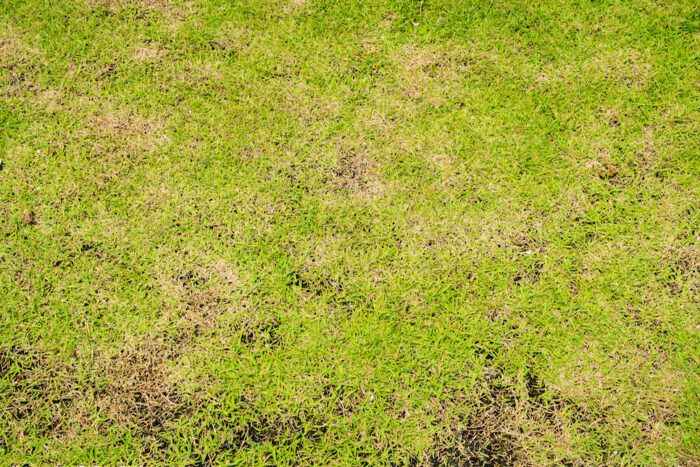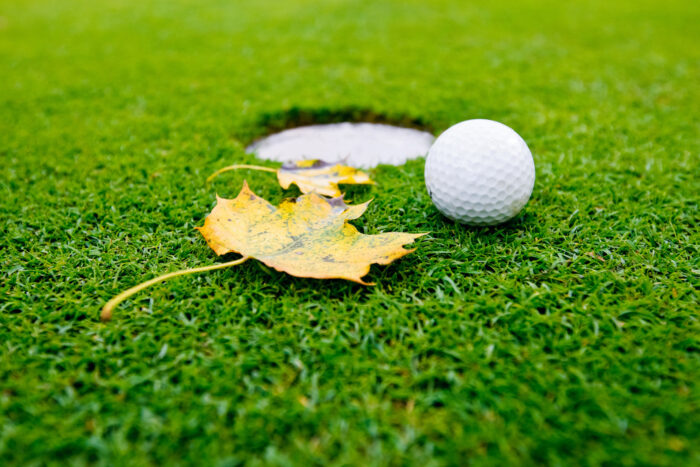The role of Aquatrols Tough Turf this autumn
The impact of summer heat stress on fine turf surfaces is likely to result in higher than usual levels of fusarium patch disease activity on greens this autumn. Fortunately, soil surfactant leader Aquatrols offers an autumn and winter programme featuring nutritional products that improve plant health.
Golfers across the UK and Europe have enjoyed a fabulous summer with record breaking temperatures and blue skies providing perfect conditions for playing golf and enjoying outdoor recreation. Golf clubs are reporting high levels of engagement with new golfers as well as those returning to the game. The successful hosting of the 150th Open at St Andrews saw significant media coverage of a dry, firm golf course in excellent condition, turf conditions which have been reflected across many golf courses this summer as the continued lack of rain has impacted on course conditioning.
For turf managers it has been an incredibly challenging time and maintaining high quality turf surfaces under these extreme heat and drought pressures is extremely difficult. Closely monitoring moisture levels and at the same time reducing mechanical stresses has been an effective greens management strategy for many, however, as thoughts turn to autumn we need to understand that turf that has been under such stresses will be more vulnerable to disease pressures. The direct impact of summer drought and heat stress on fine turf surfaces is likely to result in higher than usual levels of fusarium patch disease activity on golf greens this autumn.
Fusarium patch disease was first recorded on golf greens in 1931 and was described as the most common, disfiguring and damaging disease of close mown turf known at that time. Ninety years later, despite all the turf research completed in this time including the development of modern chemical fungicides, this statement remains true.

Despite this, golfers continue to expect high quality putting surfaces year-round and as we move into October so daylight hours reduce, soil temperatures fall, growth slows and all the factors that provide ideal conditions for fusarium patch disease come into play. Presenting high quality putting surfaces during this period can be difficult. Where disease activity does occur, surface discolouration and scarring detract from the visual quality of a golf green but more critically, will impact ball roll. In addition, with damage occurring at the same time as grass growth slows down, it can take weeks or months for damaged areas to recover. There may need to be additional resources in the form of staff hours, seed and appropriate nutrition provided to support this recovery process, more so if levels of disease damage have been severe.
Shaded green environments, poor drainage, high levels of organic matter and high levels of annual meadow grass within the surface are all factors that will predispose greens to greater levels of fusarium patch disease activity. These are factors over which turf managers have some level of control and their maintenance programmes are typically geared towards addressing these factors and improving the resiliency of their greens year on year.
Alongside this however are factors over which turf managers have no control. Predicted climatic changes mean that we are likely to face more frequent hotter, drier summers as well as warmer, wetter winter months. These conditions are playing out and the recent mild, wet UK winters have been perfect for increased fusarium patch disease activity. At the same time pesticide legislation has tightened and fungicides turf managers previously had at their disposal are no longer available. Therefore turf managers are not able to manage disease as easily or as effectively as before. Golfers need to understand this changing situation and be realistic about the quality of putting surfaces they can play on each winter.
Integrated turf management (ITM) policies are increasingly important, bringing together several different techniques to reduce the impact of turf problems – unfortunately there is no longer one solution or one product to deal with an outbreak of disease. Increasingly, turf managers look to adopt a range of preventative strategies that reduce the potential for disease activity, especially in autumn when fusarium patch disease can be aggressive and damaging.
At Aquatrols, we believe that an essential element of any integrated autumn disease management strategy must be to strengthen the turf plant and improve plant health. In turn, this means that turf will be less vulnerable to disease and if disease activity does occur, the grass plant will be in a better position to recover swiftly. This approach resulted in the research-led development of the Tough Turf package. This now well proven autumn and winter turf programme consists of Ferrosol, Premium K and CalSea Xtra; all products from the Aquatrols liquid nutritional range. This has a reduced nitrogen loading and a reduced salt index to provide a rapid green up and hardening of the turf without excessive top-growth. These products, in combination, harden and strengthen the leaf, stem and root cell walls thereby providing increased plant rigidity, alongside improving overall plant health to assist in the fight against and recovery from any disease outbreaks.

Green and yellow grass texture brown patch is caused by the destruction of fungus Rhizoctonia Solani grass leaf change from green to dead brown in a circle lawn texture background dead dry grass
Ferrosol
Liquid iron is a firm favourite in turf management and Ferrosol has now been in the marketplace for over 30 years. It was the first chelated iron introduced into the UK and its unique iron-nitrogen bonded complex formulation makes it ideal as it provides a rapid green up of turf without blackening. It acidifies the leaf and does not affect soil pH so it has been selected to form a part of this effective package in the fight against fusarium patch disease during these critical autumn and early winter months.
Premium K
Liquid potassium contains potassium acetate and this unique form of potassium has greater benefits than other potassium sources. It has a superior formulation ensuring that it can be absorbed and translocated by the grass plant up to five times quicker than other conventional sources of K. It has the lowest salt indexed form of potassium available and is therefore the most soil and plant friendly formulation. Applying even at low rates provides relatively large amounts of plant available nutrition.
CalSea Xtra
This low salt indexed calcium formulation has the added benefits of seaweed. This product provides a balanced supply of nitrogen, calcium and magnesium that are proven to build and strengthen cell walls in leaves, stems and roots. The use of calcium in strengthening plants to assist in the fight against disease is well documented and there is no doubt that calcium plays a major part in ensuring plant health is not only maintained, but also enhanced. The synergistic formulation ensures rapid uptake and absorption of nutrients which promotes both root and leaf development whilst also ensuring that micronutrients and applied nitrogen is utilised efficiently. The added benefits of seaweed are also well documented in turf management, with improvements in soil texture, overall plant health, increased and deeper rooting and enhanced photosynthesis.

Tough Turf package
The Tough Turf package involves making three to four weekly applications between October and December. Applications should be made as a tank mix with 10 litres each of Ferrosol, Premium K and CalSea Xtra in a minimum of 400 to 600 litres of water per hectare. This provides a balance of N, K, Ca, Mg and Fe and has an overall analysis of 2-0-4 + seaweed (N:P:K). The formulation has an increased synergistic effect that increases mycorrhizal populations and enhances microbial activity. By increasing uptake, absorption and availability of applied nutrients, plant health is increased and plant stresses are mitigated.
Potential benefits
Improved plant health, better turf resiliency and better playing surface characteristics through autumn and winter, despite the increased potential for fusarium patch disease activity as a result of changing climatic conditions and tightening pesticide legislation.
For more information, please contact your local Aquatrols account manager. Visit: eu.aquatrols.com















Let me tell You a sad story ! There are no comments yet, but You can be first one to comment this article.
Write a comment